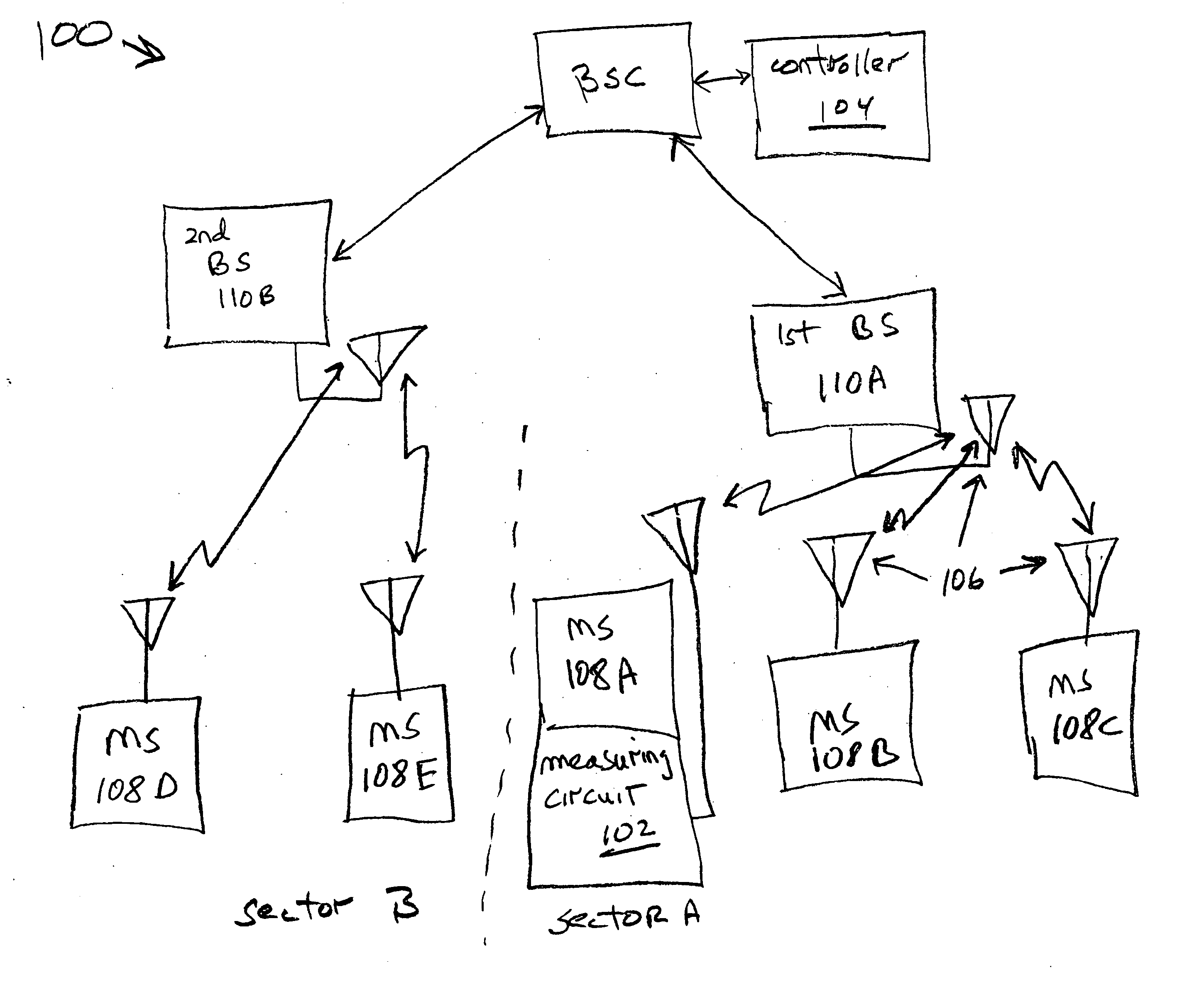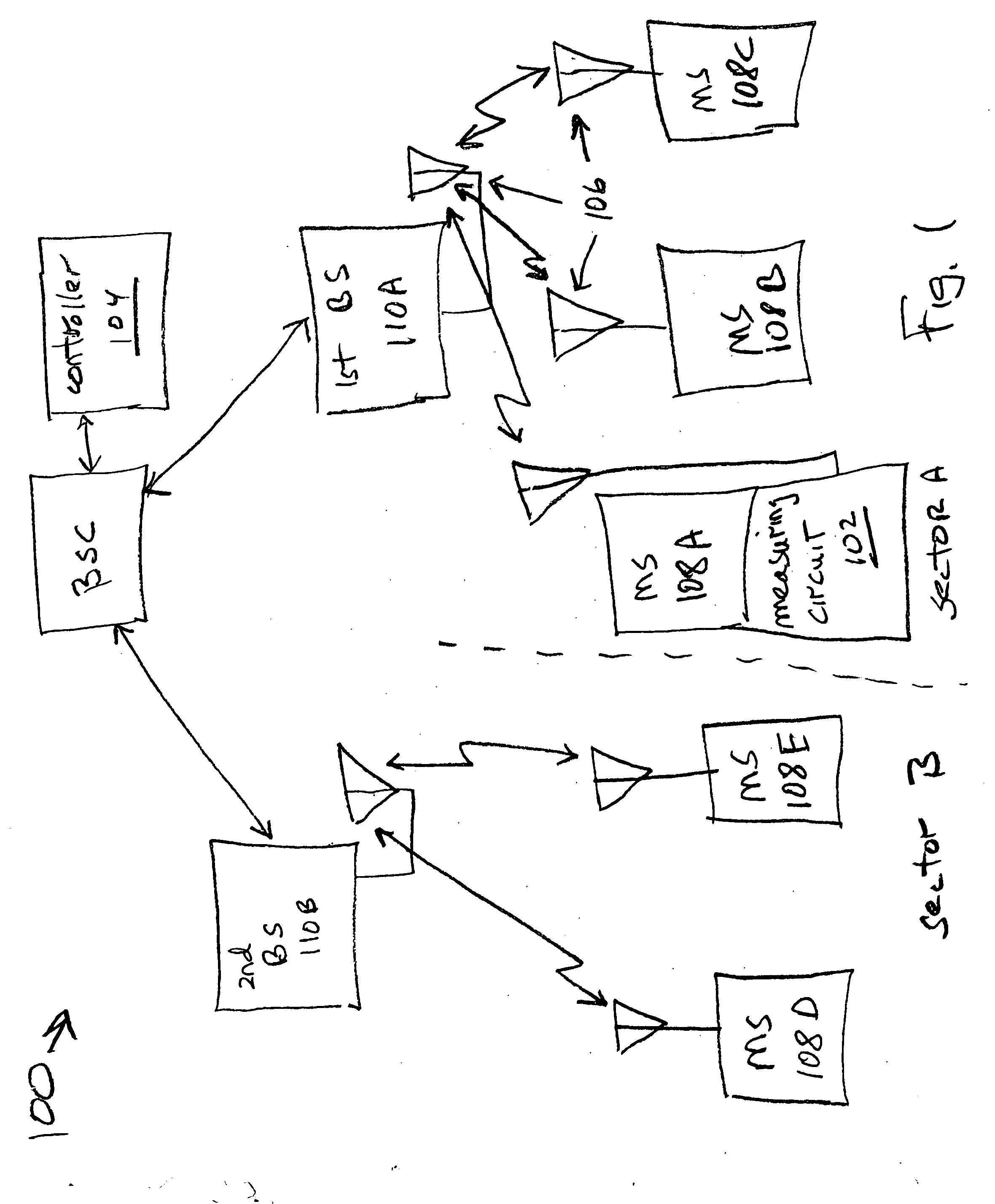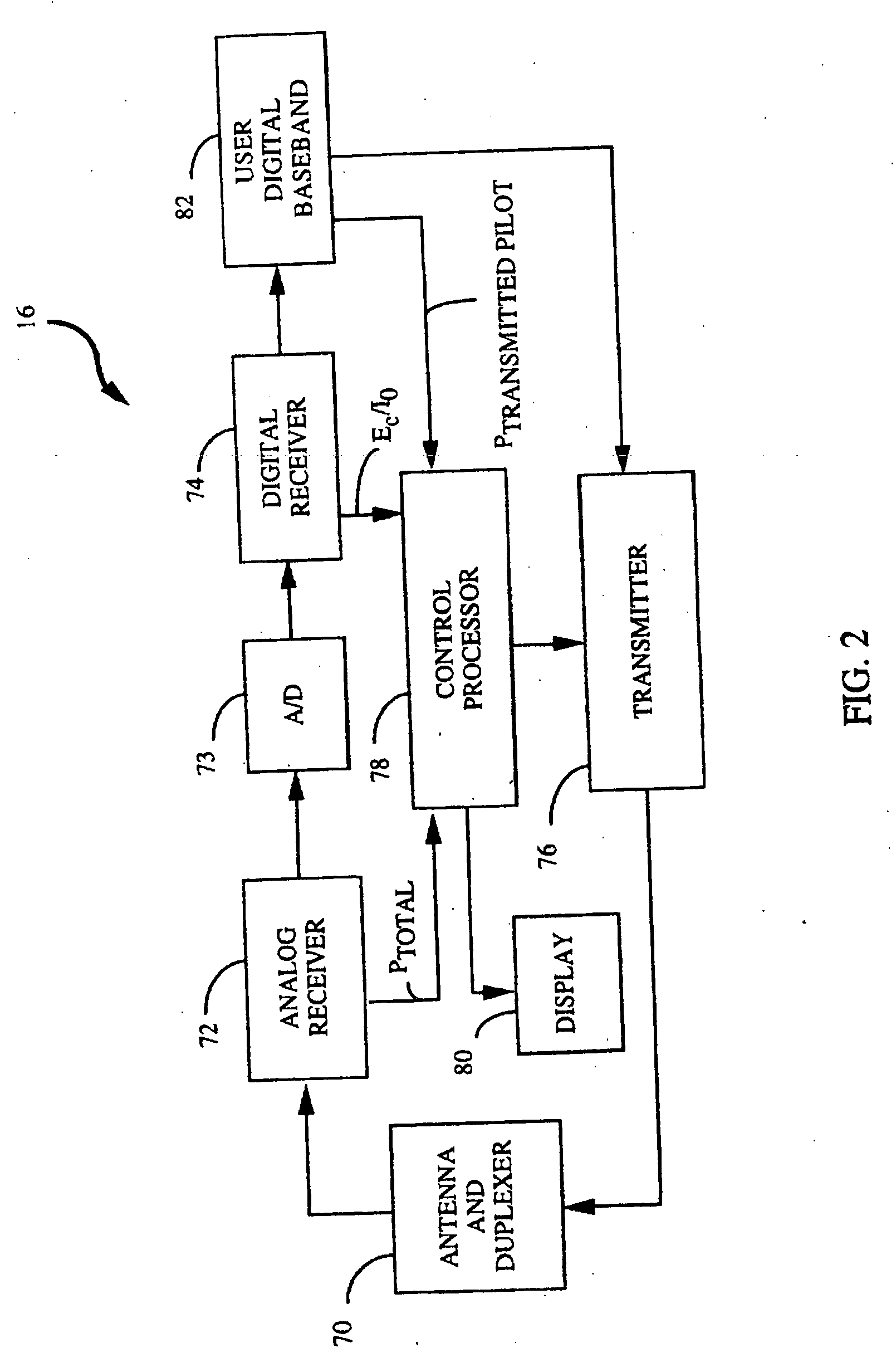System and method for global power control
a global power control and transmitter technology, applied in power management, electrical equipment, radio transmission, etc., can solve the problems of significant correlation between the average path loss of the two links, contribute to the background noise on the channel, and have a finite capacity, so as to reduce the requirement of snr for the base station, reduce the maximum transmit power of the mobile station, and reduce the data rate
- Summary
- Abstract
- Description
- Claims
- Application Information
AI Technical Summary
Benefits of technology
Problems solved by technology
Method used
Image
Examples
Embodiment Construction
[0038]FIG. 1 is a schematic block diagram of a system for global transmission power control in a wireless communication device. The system 100 comprises wireless communications receiving devices. Each receiving device includes an air interface 106, and may also include a measurement circuit 102 for measuring received power. That is, the radio frequency (RF) power within a particular channel or frequency span is measured. This received power measurement includes the transmitted signals of intended communication partners as well as “interference”. This interference may include the transmission signals of other devices sharing the channel (frequency span), harmonics and spurious signals generated in other channels, and thermal noise. Note, although only a single measure circuit is shown (embedded with mobile station 108A), a measurement circuit 102 may be embedded with each receiving device in the system.
[0039] A controller 104 has an interface connected to the receiving devices for c...
PUM
 Login to View More
Login to View More Abstract
Description
Claims
Application Information
 Login to View More
Login to View More - R&D
- Intellectual Property
- Life Sciences
- Materials
- Tech Scout
- Unparalleled Data Quality
- Higher Quality Content
- 60% Fewer Hallucinations
Browse by: Latest US Patents, China's latest patents, Technical Efficacy Thesaurus, Application Domain, Technology Topic, Popular Technical Reports.
© 2025 PatSnap. All rights reserved.Legal|Privacy policy|Modern Slavery Act Transparency Statement|Sitemap|About US| Contact US: help@patsnap.com



